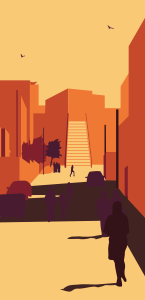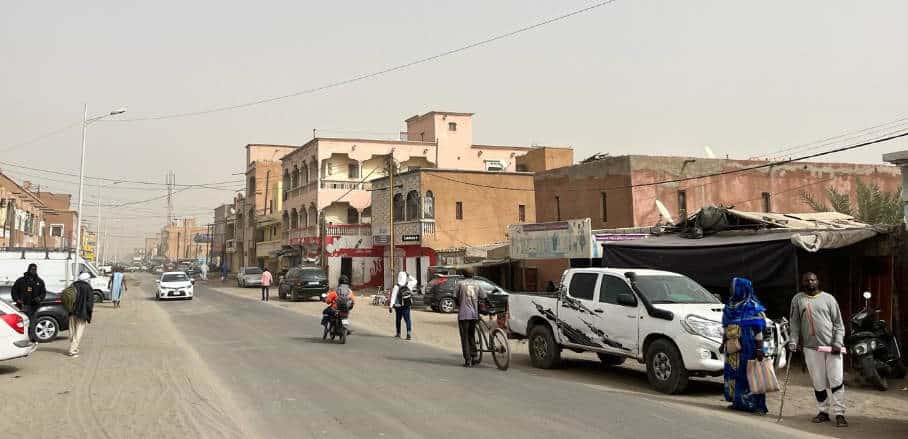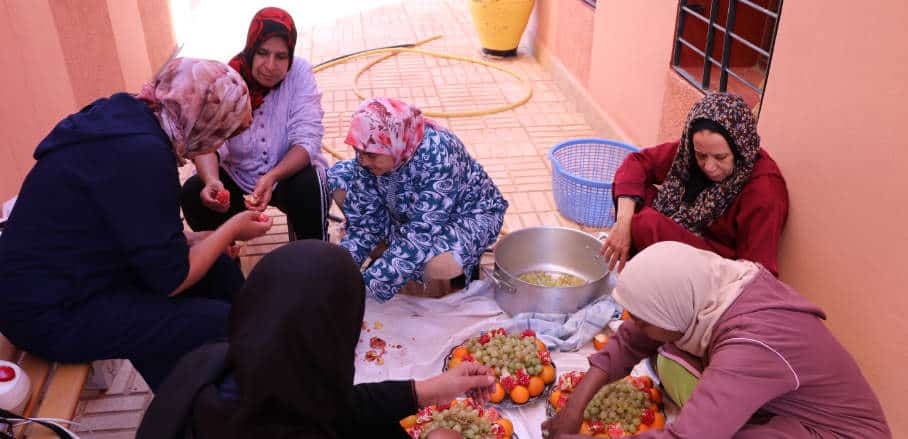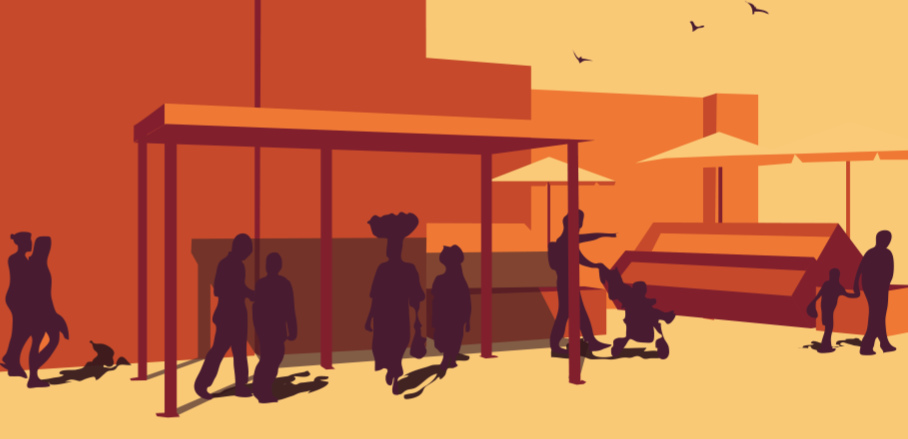The Hum of Summer Nights – Women’s Experiences of Urban Heat
“Relentless heat makes outdoor activities a distant memory.” – Seven women recount what it’s like to manage their daily lives under conditions of extreme urban heat. By Marie Munzert, Lina Saleh Suleiman Abu Salim, and Emma Greer*
Morning – Jeddah, Saudi Arabia
The morning sun creeps through the curtains, pulling me reluctantly from a night of restless sleep. It’s been rough lately, with this relentless heat wave suffocating our city.

Fully exposed and feels like 45 °C © Illustration by Emma Greer & Safiya Raheman, Climateflux
Throughout the night, I’ve been stirred awake countless times by my children’s congested noses and aggravated allergies, worsened by the constant hum of the AC. Yet, faced with the stark choice between stifling heat and uneasy sleep, we opt for the latter.
The kids are off to school, and we’ve caved into the luxury of a private bus with AC. It’s a splurge, but what can you do when the alternative is wilting in the heat of the public transport? Farewell kisses exchanged, lunch boxes packed, I can’t help but reminisce about my childhood spent outdoors, by the sea. But times have changed, and the relentless heat makes such outdoor activities a distant memory. They will have their assembly indoors and of course the breaks as well. I worry because my relationship with the city and the outdoors has always been something special to me, but this will be a truly different experience for our children.
Midday – As-Salt, Jordan
“Come on, my vegetables are excellent. I will make you a good offer,” I say to a promising-looking group on the open market. My products are excellent, but a good part of them has already gone bad by now. The sun is just too strong today.
The journey to the downtown market in As-Salt City was a familiar routine, a 1.5-hour bus ride from home. The day starts to get exhausting now. Rising with the sun was necessary and it allowed me to gather fresh vegetables and herbs from our nearby farms and prepare them for the market. Sales were slow today and the heat made everything more challenging. Not only did it sap my energy as I sat in the sun for hours, but it also took a toll on my vegetables, causing heat damage and resulting in losses. My family and I were no strangers to hard work, especially under the scorching sun. We all worked on nearby farms. However, when selling at the market there was simply no escaping the sun’s beaming rays.

City of Sebkha, Mauritania © Cities Alliance
Eventually, I packed up and trudged back to the bus stop. Waiting for the bus felt endless, leaving me drained from my day’s early start and sales of today. Boarding it, I pondered what drained me most: the physical labour, the scorching sun, or the long wait for transportation. Perhaps investing in an umbrella for future market days wouldn’t be such a bad idea.
Evening – Amman, Jordan
As evening rolls in, there’s a palpable sense of relief. The city comes alive again, being able to enjoy the outdoors and people emerging from their air-conditioned hideouts. From our apartment I watch the nearby market buzzing with activity, a sight which is very welcome after another sweltering day. Another day of missed business opportunities gives way to the prospect of a cooler evening.
With my partner back home, I venture out to get our groceries, grateful for the market’s proximity. If it was further away, transport would be another struggle. We don’t have our own car, but taking the bus or walking longer distances at night gives me an unsafe feeling so I try to avoid it. On days like today, when the market only opens late in the evening, it is missing many of its usual vendors – mostly women, I realise. With family members to care for in the evening and night, they have to lose their daily incomes on hot days like these.
Nighttime – Dubai, United Arab Emirates
As the night settles over the city, the streets begin to quieten once more. The usual background buzz of the air conditioning of the surrounding buildings kicked in, adding a comforting rhythm to the quiet evening. From our kitchen I see my children lounging in the living room, finally relaxing, and letting the day behind them. I can also observe the night sky setting over our neighbourhood through the window and take a moment to soak in the scene outside.
The heat, like an unwelcome guest, had woven its way into the fabric of our city, altering its rhythm and reshaping lives. Each day seemed to mirror the last, with fatigue growing as temperatures rose. For those working in the busy markets, the scorching sun meant dwindling incomes and wasting produce. Meanwhile, those lucky enough to find refuge in air-conditioned spaces found themselves indoors, sheltered from the relentless heat but plagued by increasing allergies. As the thermostat climbed ever higher, women burdened with caring responsibilities at night had to navigate a maze of limited public spaces and fading economic opportunities.

Women preparing fruit in Sebkha, Mauritania © Cities Alliance
As I continue cooking, I think about my children, and I cannot help but feel concerned. They’re stuck indoors on most days, missing out on the simple joys of outdoor play. They also miss school seminars in the summer months, as their concentration cannot keep up. It is a sobering realisation – to witness the rapid evolution of life as we know it, to ponder the implications for my children’s generation, and to wonder what lies ahead on the road to our uncertain future.
Making the hidden impacts of urban heat on women and vulnerable groups visible is the first step in addressing them. As these effects are distributed unequally, local authorities must become aware of these interlinked impacts heat is having on its inhabitants. Cities Alliance’s tool Her4Climate was the basis for developing the interview questionnaires used to extract the presented insights of this article and allowed for an intimate look into the daily lives of women who face extreme heat on a regular basis.
By enabling the collection of individual perception data, planning practices can actively include marginalised groups and build truly inclusive, liveable, and climate-adaptive cities. Hence, we encourage local authorities and city officials to look beyond standard indicators to see the real impacts heat has on city dwellers. Only true inclusion of all citizens in the urban planning process can enable the development of climate-proof cities and cities for people – because cities that work for women, work for everyone.
Building on a previous article “How Hot Cities are Fueling Inequalities” this text sheds light on women’s experiences in the MENA (Middle East and North Africa) region with urban heat. The interviews were conducted in February 2024 with seven women, capturing their daily experiences with urban heat in Saudi Arabia, Egypt, the United Arab Emirates, and Jordan. The findings were combined into four fictional characters. We would like to extend our gratitude to those women who opened up their daily lives for us to see and understand. Special thanks to Safiya Raheman, Menna Shahin, and Lina Abu Salim.
*The opinions expressed herein are solely those of the authors and do not necessarily reflect the official views of Cities Alliance, its members, or UNOPS.
